Yes, it is true not all wood posts are the same. Different species of wood will last longer than others and some are better to use if you are hydraulically driving a post vs hand setting a post. By learning the differences, you will be able to choose the best wood post for your needs.
In part one of this blog series we discussed how species, location of growth, knots, types of wood in the post, and form can help you determine what posts will work the best for your project. In the second blog post we explained how treatment, diameter, length, and installation method can effect the type of post you decide purchase for your project.
In this final part of the "Know Before You Buy" series, we will be showing you how your fence plans will help you decide which posts to purchase.
Brace Assemblies: (Drawings are not to scale)
Single Brace Assembly for a gate area
All posts listed are figured with good stable soil. Rule of thumb if you are installing fence posts in a wet ground or unstable soil longer length posts will be needed to provide stability. All brace assembly posts should be installed below your frost level.
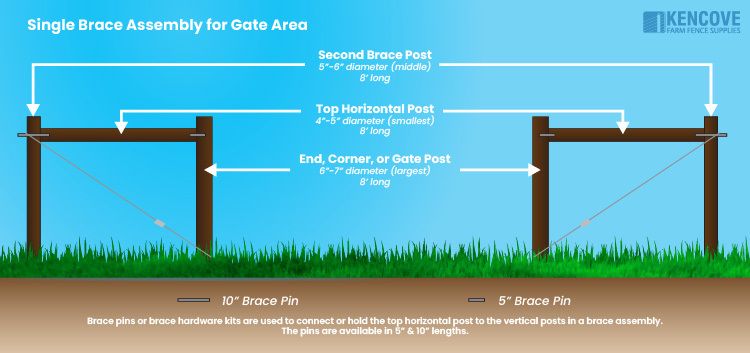 Single Brace Gate Assembly
Single Brace Gate Assembly
Rules of Thumb:
- End, Corner, and Gate posts will be the biggest diameter
- Second Brace posts will step down 1” in diameter from the end, corner and gate post
- Top Horizontal post will be 4”-5” average diameter and the length is determined by the height of your fence off the ground. The** length is 2 x the height of the fence** with a minimum 8’ length.
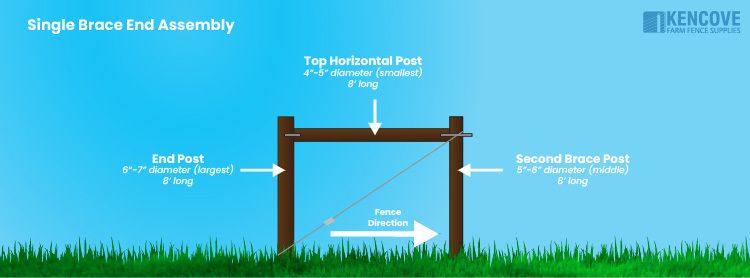 Single Brace End Assembly
Single Brace End Assembly
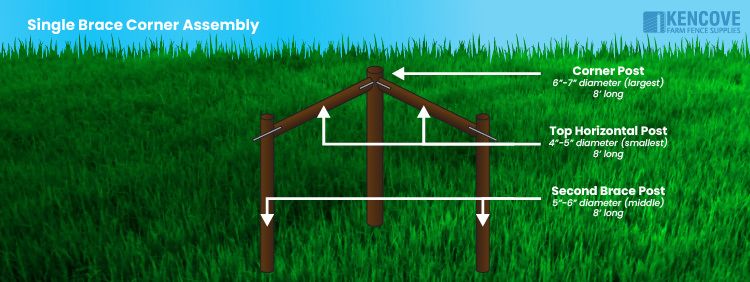 Single Brace Corner Assembly
Single Brace Corner Assembly
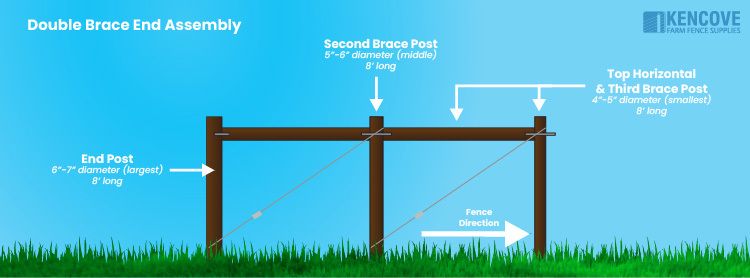 Double Brace End Assembly
Double Brace End Assembly
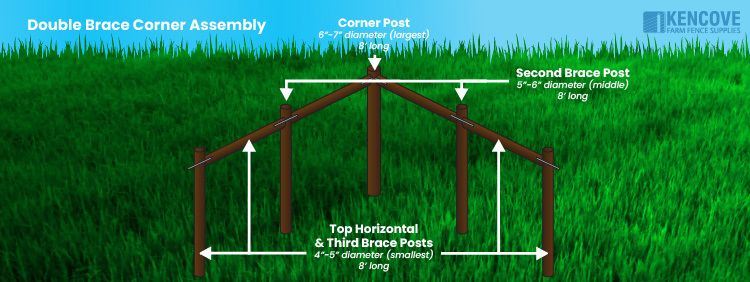 Double Brace Corner Assembly
Double Brace Corner Assembly
Brace Assembly
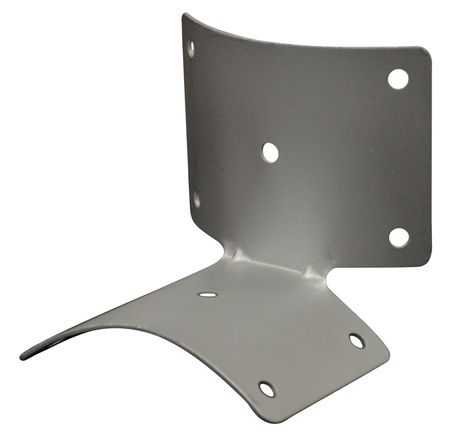 Close up of the H-Brace Hardware Kit (HBH)
Close up of the H-Brace Hardware Kit (HBH)
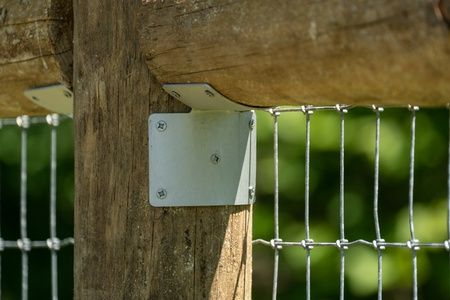 An installed H-Brace Hardware Kit
An installed H-Brace Hardware Kit
All brace assemblies must be constructed using bracing wire or brace cable kit system. Industry standard is a double wrap of 12.5 gauge high-tensile wire in a double figure 8 fashion. Another option is the Quick Brace system (HQBS12) as seen below. The HQBS12 Quick Brace requires a Gripple tool (TGTCC) to tension the cable.
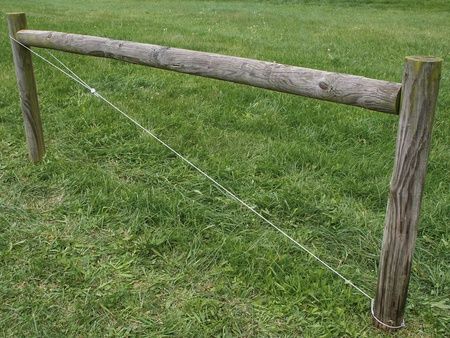 The 12' Quick Brace Kit (HQBS12)
The 12' Quick Brace Kit (HQBS12)
Double Figure 8 Brace Wire System Wire is installed in the direction of the pull. Wire is secured to the post on the left at the bottom by locating wire below a staple. Wire then goes up around the top of the protruding 10” brace pin on the post on the right in a figure 8 fashion, and tensioned in this photo using an inline wire strainer. Other tensioning mechanisms can be used.
 Brace wire Installation diagram
Brace wire Installation diagram
Line Posts: Line posts are used to support the wire. For a high-tensile fence the spacing is determined by terrain and livestock pressure.
For example if the fence purpose is pasture with flat terrain, we have seen spacings up to 50’ apart. If the terrain is more rolling, then you may want place posts closer say 20’, 15’, or even 12’ apart depending on how hilly.
When fencing for horses we recommend a maximum line post spacing of 12’. If you are using wider post spacings and you want to ensure animals don’t walk through the fence you can incorporate supports called battens, spacers or droppers. This additional support to the wire helps to overcome the pressure from the livestock and in essence present a sturdier fence. A batton, spacer or dropper does not touch the ground and are connect to the wire with a clips. This prevents the animals from separating the wires and getting through. This is usually used in places that will have heavy pressure on fence.
Line posts can be as small as 3” in diameter but industry standard leans more towards 4”.
How far should a post be set below ground level? We recommend a minimum of 24” but the deeper the post the sturdier the fence.
All posts listed are figured with good stable soil. If you are installing fence posts in a wet ground or unstable soil then longer length posts will be needed to provide stability.
If a line post is driven out of the ground by mother nature or other situations the fence will not fall down. If a brace assembly post is driven out of the ground for any reason the fence will fall down. Brace assemblies are the foundation of your fence.
Size for Number of Wires: Using the correct diameter and length for the correct purpose is important in building a strong fence. We will look at types of fence and their specific needs.
A 1-3 wire high-tensile fence requires no bracing on flat level ground. It is recommended to use a 6-7” diameter post that is 8’ long on all ends, corners and gates. You do not need a brace assembly on ends and corners for this type of fence. However you will need a single end brace assembly to hang a gate.
A 4-6 wire high-tensile fence requires a single brace assembly at all ends, corners and gates.
More than 6 wires high-tensile fence require double brace assemblies at all ends, corners and gates.
Remember not all posts are made the same, we have covered species, location of growth, knots, types of wood in the post, and form, treatment, diameter, length, brace assemblies, size, and number of wires. Knowing the differences in these areas can help you start to narrow down your choices when it comes to planning your fencing project!
For additional assistance to ensure you are using the correct diameter and length of post contact your Kencove Product Specialist at 800-536-2683.
Disposal of Treated Wood: DISPOSE IN A LAND FILL, DO NOT BURN TREATED WOOD DO NOT SPREAD ASH OR DUST FROM TREATED WOOD ONTO GARDENS,WASH YOUR HANDS AFTER HANDLING TREATED WOOD AND BEFORE EATING OR DRINKING COMMON SENSE PRECAUTIONS




